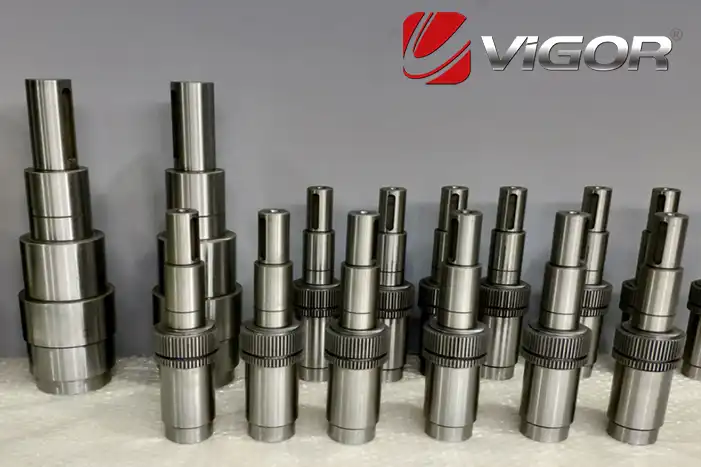
Knowledge
Spline Shaft Applications, Material Selection and Testing
Spline shaft is a type of mechanical transmission component primarily utilized for the transfer of mechanical torque. It features longitudinal keyways on its surface, which align with corresponding keyways in the rotating components mounted on it, ensuring synchronous rotation. The following sections detail the applications, material selection criteria, and testing considerations for spline shafts.
Spline Shaft Applications
Spline shafts find extensive application across various mechanical systems, particularly where high torque transmission and precise control are essential. They play a critical role in industries such as aerospace, automotive, agricultural machinery, machine tool manufacturing, and general mechanical transmissions. Additionally, spline shafts are commonly employed in components requiring longitudinal sliding, such as transmission shift gears.
Material Selection for Spline Shafts
The choice of materials for spline shafts is influenced by their operating environment and performance requirements. Commonly used materials include stainless steel, carbon steel, alloy steel, and aluminum alloys:
- Stainless Steel: Known for its superior corrosion resistance and high strength, stainless steel is frequently selected for spline shaft manufacturing.
- Carbon Steel: This material offers excellent strength and ductility, making it a preferred choice for spline shafts. Its durability and machinability also make it suitable for producing intricate spline designs.
- Alloy Steel: By incorporating elements like chromium and molybdenum, alloy steel achieves enhanced performance characteristics, including higher strength and wear resistance, enabling it to endure harsh working conditions.
- Aluminum Alloy: Due to its lightweight and high-strength properties, aluminum alloy is particularly suitable for manufacturing spline shafts that require weight reduction. These alloys also exhibit excellent corrosion resistance, ensuring durability in various environments.
Detection of Spline Shafts
Ensuring the quality and performance of spline shafts is critical, necessitating a comprehensive detection process. The primary test items include geometric dimensions, mechanical properties, and surface characteristics.
- Geometric Dimension Inspection: This involves measuring external diameter, internal diameter, tooth width, tooth height, tooth spacing, modulus, pressure angle, and other geometric parameters to ensure compliance with design specifications.
- Coaxiality Inspection: Evaluating the coaxiality error between the spline shaft and the reference shaft ensures rotational accuracy.
- Contact Area Inspection: Analyzing the contact area of the spline tooth surface confirms whether it meets design requirements, ensuring stable and reliable torque transmission.
- Surface Roughness Inspection: Assessing the roughness grade of the spline tooth surface and shaft surface evaluates wear resistance and fatigue resistance.
- Hardness Testing: Evaluating the hardness distribution of spline materials ensures adequate wear resistance and strength.
- Material Composition Analysis: Chemical composition analysis determines whether the material composition of the spline meets industry standards.
- Fatigue Testing: Evaluating the fatigue life of the spline under cyclic loading ensures long-term reliability.
In conclusion, spline shafts are extensively utilized across various industries. The material selection is versatile, and the testing procedures are comprehensive. In practical applications, it is imperative to choose suitable materials and conduct necessary tests based on specific working environments and performance requirements to ensure optimal quality and performance of the spline shaft.
If you have any question, demand, new parts development or improve your supply chain, please feel free to contact us info@castings-forging.com




